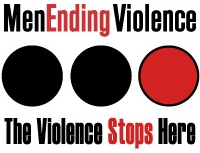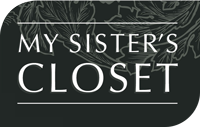by Jessica West, Practicum Student at Battered Women’s Support Services
Scenes of violence against women (VAW) are ubiquitous in Hollywood: an episode of Criminal Minds features a psychopath who takes pleasure in torturing young teenage girls, an episode of CSI sees the detectives discovering the mangled body of a woman in a dumpster, an unlikeable character on Scandal is raped to garner sympathy for her character, the low-class ladies’ maid on Downton Abbey is raped to spice up her character’s plot line. There is even an entire TV series, Law and Order: SVU, devoted to depicting sexual crimes against women and children. We consume these images as entertainment, without questioning how they impact us or other people who watch them. It worries me to see that these depictions are only increasing in prevalence, as the Parents Television Council found that between 2004 and 2009 scenes of violence against women on TV increased by 120%. They also found that 92% of violence against women and the aftermath is visually depicted onscreen, rather than implied or described within an episode (8%).
On March 7th, the Vancouver International Women in Film Festival convened a panel to discuss the depiction of violence against women in film and television. The panel was moderated by Angela Marie MacDougall, Executive Director of Battered Women’s Support Services, and the panelists were: Jarrah Hodge, creator of the Gender Focus blog, Arlana Green from WAVAW, Hilla Kerner from Vancouver Rape Relief and Women’s Shelter, and Natalie Hill from Women Action and the Media Vancouver. The panel tackled big questions and explored what is problematic about depictions of violence against women and girls onscreen, and how TV and film-makers should change their approach to portrayals of violence against women in order to influence change in the real world.
(Picture credit: WAVAW)
This article is a highlight of the panel discussion on Portrayals of Violence Against Women in Film and Television at the Vancouver International Women in Film Festival 2014.
What’s So Wrong with VAW in TV and Movies?
The first concern of the panel was how onscreen violence dehumanizes women. Arlana critiqued the way in which depictions of violence against women onscreen dehumanize women by showing women’s bodies as objects which men are entitled to. This dehumanization of women is the first step in justifying violence against them. She argued that TV and films therefore perpetuate violence against girls and women because the images we see on screen inform our behaviour in real life. When people see images of women’s bodies being dismembered, women being kidnapped, raped and murdered, it influences how they see women off-screen and how they can justify violence against them. This influences individual acts of violence against women, and also the community’s acceptance of violence against women as normal.
Central to any criticism of depictions of violence against women in film and television is the fact that Hollywood is dominated by men, and the stories of rape, violence and murder of women are being written, directed and produced by men, for a male audience, in order to profit male executives in the film and television industry. That women are not the ones telling our own stories of pain and trauma is disempowering. That these depictions cater to men’s sexual fantasies is disgusting and horrifying. And that the brutalization of women’s bodies is being commodified to make money for men with privilege, is something we all should be concerned about.
Diversity, or lack thereof, is another major concern expressed by the panel; this refers to both the diversity of experiences of violence and who is cast as the victim/survivor of violence. Often the victims of violence on TV and film are young, white, straight, cis-gendered, able-bodied, upper or middle-class women (For example, the rape of Naomi Clark on 90210, or Charlotte from Private Practice). There is very little depiction of women onscreen who do not fit into that narrow classification. This is a misrepresentation given that we know women of colour, women with disabilities, queer and trans women and other marginalized women face disproportionately more violence than women with more privilege. Jarrah noted that the misrepresentation of who experiences violence is problematic because if women do not see themselves represented, they could internalize that their experience are less valid. Arlana underlined that it makes women think that if they are not rich white women, their stories will not be believed, and unfortunately, this is often the reality that marginalized women experience.
Imagining Change in Depictions of Violence Onscreen
The panelists made important suggestions for how depictions of violence against women need to change. To diversify representations of women’s responses to violence, Jarrah suggested that TV shows should lengthen the story arcs past one or two episodes to portray how for many women healing is a process that takes a long time and sexual assault isn’t something that someone can just “get over” within a week or two. Hilla put forward the idea of depicting women calling their local rape crisis centre or women’s group, to not only show the different ways that women resist (besides calling the police), but also raise awareness of the resources available for women who experience violence in their lives. Jarrah also commented that it is cruel for TV and film-makers to produce movies or episodes featuring sexual violence without including a trigger warning at the start and advertising resources for people who may have been impacted by violence similar to that depicted onscreen.
We need to recognize and undermine stereotypes and myths of violence against women perpetuated in TV and film such as the commonly depicted stranger rape, where a deranged, deviant man jumps out of the woods or around a corner and randomly assaults an angelic, virginal woman walking down the street. This type of assault accounts for a minority of women’s experiences. We know that women are most often assaulted by someone they know, in their own home. Natalie suggests that in order to counter this, TV and film-makers need to explore the grey areas of characters and resist simplifying them as “good guys” or “bad guys”, instead both perpetrators and survivors should be complex characters with flaws and traits that make them relatable to audiences. Hilla also sees the importance of undermining the core sexist message that women need men to save them from other men, by depicting women being rescued and supported by other women.
Given the current discourse around consent education, the panel reflected on the need to portray healthy relationships and consent in sexual relationships. Although Natalie questioned the possibility of this given the difficulty of capturing the nuances of consent coupled with TV and film’s drive to show the most dramatic aspects of human experience, Jarrah suggested that it could begin by showing basic communication between two characters engaged in sexual activity, with one character checking in with the other if they look uncomfortable. There should also be more diversity in depictions of sex and sexual assault. The only two stories we seems to see are the case of two people actively consenting and participating in sex, or the case where a woman says no or resists, and he continues to rape her, with either no consequences or the subsequent involvement of the criminal justice system. Hilla wonders, why don’t we see scenes where she says no, and he respectfully stops? Or if he does rape her, why don’t we see the community responding by supporting the survivor and punishing the perpetrator?
Another significant aspect of the discussion is the representation of violence against trans people on film and television. Trans people are rarely portrayed onscreen, but when they are, it is only in relation to violence. Trans people are characterized as either the killers or the victims of violent crimes, with no complexity or depth in their onscreen roles (with the possible exception of Orange Is The New Black). In addition to rethinking how violence against trans people is represented onscreen, TV and film-makers need to create new opportunities for trans people to be represented completely separate from themes of violence.
I want to close with a quote from Hilla Kerner, “TV and film are fictional stories, we should use them to create the change we want to see”. Although TV and film are fictional stories, they are stories with a great deal of power. Sometimes art imitates life, and other times life imitates art. Taking our cue from that truism, we need to capitalize on how these fictional stories can be used to influence individual actions and community responses in reality. By creating the stories we want to see, we can shape the world in which we want to live in. We need to critically examine depictions of violence against women in TV and film and identify how they can be changed to challenge rape myths, to make visible the tacit acceptance and normalization of violence against women, and to encourage new societal norms. Societal norms of community support for survivors of violence, community sanctions for perpetrators, recognition of the validity of all diverse experiences of violence and, if we dare to dream it, an end to violence against women.
Other resources:
http://womenandhollywood.com/2009/10/29/violence-against-women-and-girls-surges-on-tv/
http://www.xojane.com/entertainment/scandal-mellie-rape
http://www.feminisms.org/4232/you-watch-that-why-we-consume-violence-against-women-as-entertainment/
http://prospect.org/article/rape-tv—more-just-plot-twist





